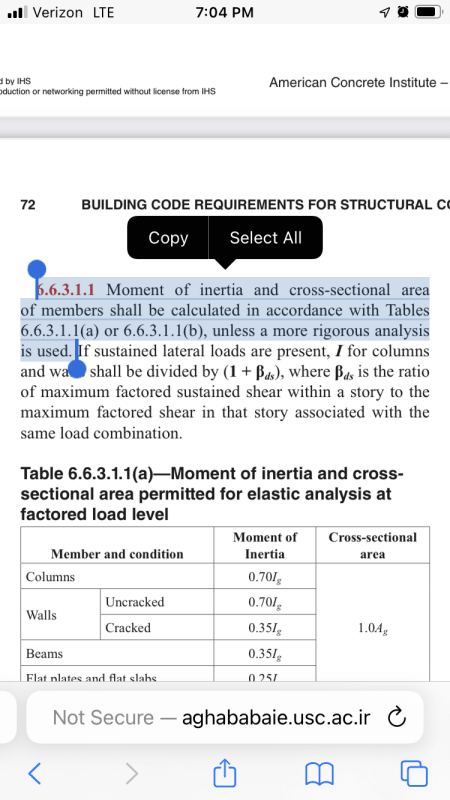lg1990
Structural
- Dec 17, 2021
- 2
Hello,
I am wondering if anyone has been able to use gross stiffness properties in a concrete structure if it is proven that the tensile stress in a concrete member is not present under service level loading.
This is a question from someone who works in SoCal. ACI 318-14 Section 6.6.3.1.1 notes that the tabled values shall be used unless a more rigorous calculation is used.
My thoughts are if the tensile stress is less than fr, then for an example a 1.0EI can be used for beams and columns, and 0.7EI can be used for walls.
This could be applicable to moment frame buildings in which drifts are controlling.
Side question: Why are walls the only element that has an effective stiffness based on cracking, whereas the other elements only have one value? And also, do most people just take the 0.35 penalty for walls, or do they actually check the stresses for cracking to get the 0.7 value? Compressive stresses are often checked anyways to check if SBE is required.
Thanks in advance!

I am wondering if anyone has been able to use gross stiffness properties in a concrete structure if it is proven that the tensile stress in a concrete member is not present under service level loading.
This is a question from someone who works in SoCal. ACI 318-14 Section 6.6.3.1.1 notes that the tabled values shall be used unless a more rigorous calculation is used.
My thoughts are if the tensile stress is less than fr, then for an example a 1.0EI can be used for beams and columns, and 0.7EI can be used for walls.
This could be applicable to moment frame buildings in which drifts are controlling.
Side question: Why are walls the only element that has an effective stiffness based on cracking, whereas the other elements only have one value? And also, do most people just take the 0.35 penalty for walls, or do they actually check the stresses for cracking to get the 0.7 value? Compressive stresses are often checked anyways to check if SBE is required.
Thanks in advance!

